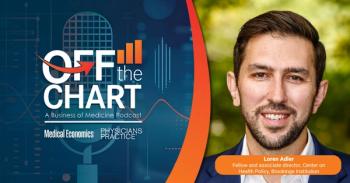
Good communication, better outcomes
Why this is especially true for patients with intellectual and/or developmental disabilities.
The nature of communication between physicians and patients can greatly affect the overall outcome of a visit. When a patient’s desire or ability to communicate their symptoms to a clinician is hampered, the clinician may not have the needed information to make an accurate diagnosis. Conversely, when a clinicians’ skills in communicating with different types of patients is limited, crucial information may be missed. There is much talk about cultural competency in today’s world. Usually, you hear about the need for clinicians to be culturally competent relating to race, ethnicity, and gender variances. There’s another group where communication is often challenging but vital to good healthcare and outcome improvement. That group is comprised of an estimated 7.5 million people in the US with an intellectual and/or developmental disability (IDD).
One of the main reasons that challenges exist in treating patients with IDD is that most clinicians have received little, if any, training in medical schools and residency programs. I was one of them. It was very eye-opening to me when I started working at a residential program for people with IDD and realized I knew so little about how to meet their healthcare needs. One of the biggest misconceptions I had to overcome was that people with intellectual disabilities who also don’t use verbal language can still express and communicate a great deal of helpful clinical information, usually in the form of behaviors. However, what commonly occurs when we see a person with IDD exhibiting various behaviors is that we attribute them to the disability rather than recognizing that many behaviors are often pointing to underlying, treatable medical conditions. And it only takes a small amount of training to unlock these insights that can dramatically improve outcomes.
Here are a few insights and clinical pearls I learned about facilitating better healthcare interactions with people affected by IDD.
Respectful communication is important in any relationship.
When working with people with disabilities, we must remember that they are people first, and speak in that manner. For instance, in the second sentence of this paragraph, I used the term “people affected by IDD” rather than “disabled people.” Putting the “person” first in language helps to put the person first in our minds, seeing them as a human being with value who has a few challenges rather than as the challenge itself. Similarly, this helps emphasize that a different quality of life does not equal a lower quality of life—an essential concept to approaching people with IDD with compassion.
There are a number of behaviors that can point to specific underlying and treatable medical conditions that are frequently dismissed by supporters and clinicians.
One example is hand-mouth behavior where a person puts their hand in their mouth frequently or likes to chew on objects. It’s easy to say, “they do this just because they have a disability.” Were you aware that these behaviors are commonly seen in people who have underlying gastroesophageal reflux?
Sometimes aggressive behaviors, especially when they appear in certain contexts, can point to a treatable condition.
For instance, a person who becomes agitated around mealtimes or who spits out their food may have learned that every time they eat or chew, they will have pain from an undiagnosed dental condition. They then exhibit “disruptive behaviors” in their attempt to avoid discomfort. Unfortunately, what often happens is that a person with these symptoms is prescribed psychotropic medications to “calm them down” which only masks the real problem.
Newsletter
Optimize your practice with the Physicians Practice newsletter, offering management pearls, leadership tips, and business strategies tailored for practice administrators and physicians of any specialty.










